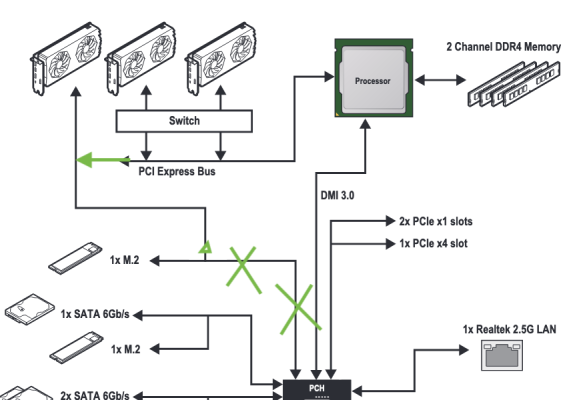- Joined
- Oct 24, 2013
- Messages
- 1,250
- Motherboard
- Asus ROG Z690 Formula
- CPU
- i9-13900K
- Graphics
- RX 6900 XT
- Mac
- Mobile Phone
When you add a Rocket Lake CPU to the Z490 Vision D, there is an option in the BIOS that enables you to use the top M.2 slot as direct attached CPU lanes. This option did not exist in earlier BIOSes.I apologize if this has been asked already. With the Vision-D Z490 Board, If I were to upgrade to a 11900K Processor to enable PCIe4 support, will this fully enable the PCIe4 Spec on the motherboard? Namely, will the M2A_CPU M.2 socket reroute to CPU PCIE Lanes? Currently with the 10900K the M2A_CPU is using the Z490 chipset lanes according to the spec in the manual. I assume the 16x and 8x PCIe slots move to the faster PCIe4 lane speed.
I am debating if it is worth the upgrade. My crazy thought is it would be nice to maybe double up the GPU's, since PCIe4 x8 slot are equal to PCIe3 x16 slot. From there run Hypervisor and have both Windows and MacOS running simultaneously on the same box each with their own discreet graphics.
Comet Lake only had 16 CPU-attached PCIe lanes but Rocket Lake has 20, 16 for the graphics card, 4 for a direct-CPU attached M.2 slot.
I forgot the name of the specific option in the BIOS as my Z490 Vision D has been retired. But I tested it, and it worked. I tested on the F20 BIOS, and it was not enabled by default.
It should be also noted that in order to use Rocket lake, you need at least BIOS F20 as the earlier BIOSes don’t support Rocket Lake.
Last edited:

